Coco is a lovely, effervescent film about death. It explores themes of familial responsibility, death, and loss, but marries those heavy themes with musical numbers and unforced comedy. The animation is uniformly beautiful and the script is often hilarious. But before we get into the details, I’ll just tell you whether you should see it in the theater:
YES.
This is my favorite Pixar film since WALL-E, and while the story follows a fairly typical plot it’s emotionally rich in a way that recalls last year’s Kubo and the Two Strings more than any other film I can think of. Before I go any further, however, I also want to encourage you to check out Remezcla’s round-up of Latino movie critics, and what they have to say about Coco. I have lots of feelings about it, and I’ll discuss them below, but I can’t speak to the cultural details the way they can.
Coco is preceded by a Frozen short that I found cute and innocuous and a little cheesy and wonderfully Scandinavian. (Don’t worry, parents, no one sings “Let It Go.”) I’ve noticed a few critics online who are annoyed about the length, but it didn’t bother me… but then again I was so irritated by the previews that Olaf’s antics were a relief. I’ve also seen a few people who thought it was too Christmas-y, but characters are clearly celebrating Hanukkah and the Solstice, in addition to the sort of secular gift-giving Christmas that’s dear to Disney’s merchandising heart, so I think everyone’s covered? And then we dive into Coco, which is so lovingly specific it will drive the short out of your brain immediately.
First, a basic, non-spoiler plot synopsis: Miguel is a young boy in Santa Cecilia, Mexico (St. Cecelia being the patron saint of music) and his greatest wish is to become a musician like his hero, Ernesto de la Cruz. Unfortunately, his family has forbidden music because of a long ago tragedy. On Día de Muertos, Miguel accidentally travels to the Land of the Dead, and has to seek a blessing from de la Cruz to get home before sunrise, or stay a skeleton forever. There are lots of missed connections, shenanigans, tear-jerking moments, and musical numbers that are not only actually good, but also necessary to the plot. The film is steeped in Mexican culture, with nods to cinema stars, artists, food, Mayan culture, and, most of all the traditions surround Día de Muertos.
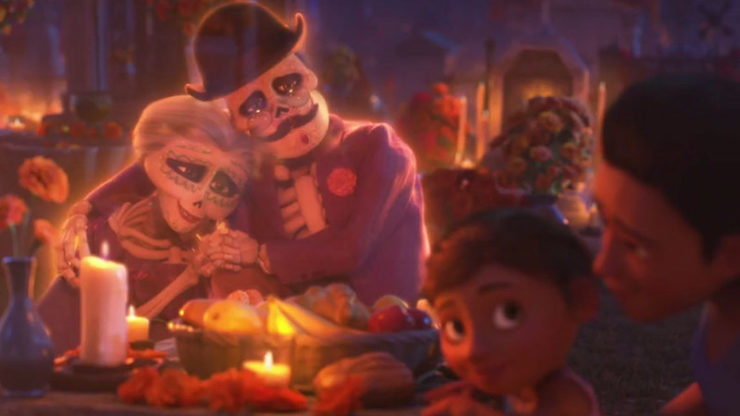
The voice acting is fantastic throughout. Anthony Gonzalez is charming as Miguel: slightly whiny at times, devoted to music, with a believable sense of mischief and adherence to the jumps in logic that a kid’s brain will make when an adult’s would balk. All of the adults shade between being stern and indulgent toward Miguel, and Gael García Bernal is absolutely perfect as Hector, who starts off as a sly trickster figure before becoming Miguel’s guide to the world of the dead—and an increasingly important character.
I’ll confess here that I tend to hate animated musicals. I don’t want to Let it Go, I don’t want to be Part of That World, I don’t want to hear any more whining about a Provincial Life. I don’t need Randy Newman’s opinions on friendship. I just want everyone to talk. But Coco’s music is not only integral to the plot, it’s also effervescent and heartfelt. Silly songs like “Un Poco Loco” balance with traditional heartstring-tuggers like “La Llorona,” but the music’s importance really becomes clear with the repeated uses of “Remember Me” which changes meaning throughout the film, depending on who’s singing it.

The film’s main theme, loving and supporting your family, and remembering those you’ve lost, comes through in every scene. While Miguel sometimes finds his family and their shoemaking business suffocating, he also knows that they love him. His entire sprawling family bustles between their home and their shoe shop, and not only is the family led by Miguel’s Abuelita Elena, the tough matriarch, but the whole family also cares for Miguel’s great-grandmother, Coco. She lives in her home, surrounded not only by her children and their children and their children’s children, but also by the lovingly-cared-for photos of those who came before her. The film shows us this, so rather than hearing people blather about the importance of family and respect for the elderly, we all see it in action. We love Coco almost as much as Miguel does.
If your child has suffered a loss recently, or if they’ve been prodding you about the whole death thing, Pixar has given you a great way to make that conversation easier. Death is quite real. However, the film puts its focus on the idea that you can honor those you’ve lost by remembering them and telling their stories. Just because someone isn’t with you anymore, that doesn’t mean that the love you have for them has disappeared. Best of all it does this strictly within the tradition of Día De Muertos. For families that follow these traditions, the film offers an opportunity to see the holiday dramatized onscreen. For others, this is not only a only a chance to teach kids about another culture, but it’s also a warm, comforting space to talk about your own family’s attitudes toward death. And the film is funny enough, and colorful enough, that it has escape valves built into it to keep smaller children from being frightened.
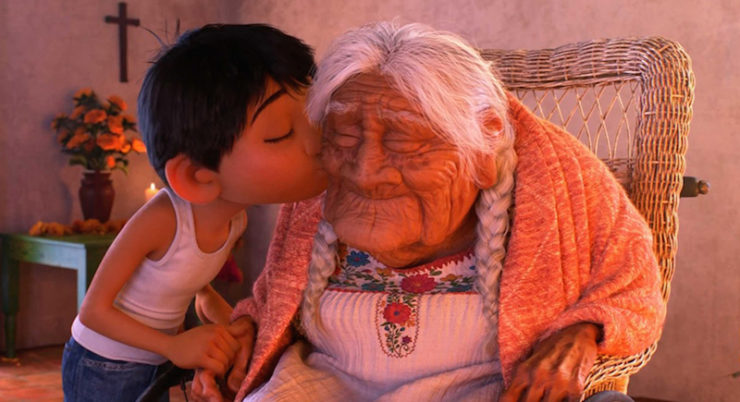
I’ve seen a lot of comparisons to Ratatouille and Spirited Away, and while those are both apt, I thought it was interesting how much the film mirrors Kubo and the Two Strings. That film was far darker, and had a more epic feel than Coco, but the basic idea of uniting a family beyond death resonates in both stories.
Kubo focused on the Buddhist tradition of the Obon Festival. The film’s director, Travis Knight, has family members who are practicing Buddhists, so he chose to translate a Japanese tradition for American audiences. The cast reflects this, with the main characters being played by an international cast of bankable (white) stars Charlize Theron, Ralph Fiennes, and Matthew McConaughey. Knight chose to fill the bench of his side characters with Japanese and Japanese–American actors. It was an interesting step, to me, since it implied that Knight was striving for a level of cultural authenticity while also hiring enough big names to get greenlit—I can’t imagine that a complicated children’s film about Buddhist death rituals was an easy sell in the U.S., even for the scion of Nike.
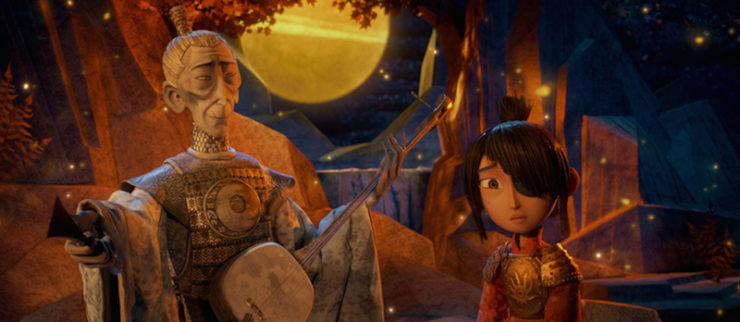
Conversely, Tim Burton’s Corpse Bride did the singularly weird thing of mashing up repressive Protestant English Victoriana with a riff on Jewish folktale of The Dybbuk and a colorful, Día de Muertos-tinged afterlife. Now I’m all for this type of mashup, but I was frustrated by that film’s lack of internal logic. Why did Victor end up there? Why was the realm of the dead like that? Why was Emily enacting a Jewish folktale after her murder? Was this what Victor expected to happen to him when he died? This seemed to be the only afterlife—Victor’s childhood dog was there, waiting for him, and one of the children of Victor’s town recognized his beloved grandfather when the dead all come back into the land of the living.
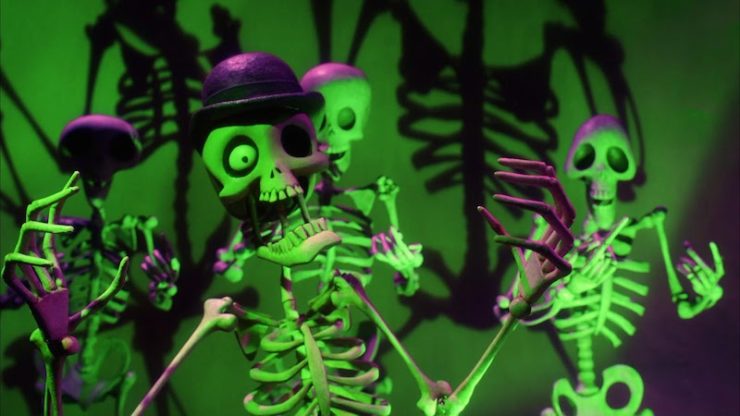
Coco, however, makes sense. It shows us an indigenous/Mexican tradition, and everyone in the land of the dead is Mexican, and believed in these traditions in life. Miguel’s best friend in life is a Xoloitzcuintli—a Mexican hairless dog—named Dante. The bridge between life and death is paved with Aztec marigolds—flowers traditionally left on the shrines to the dead. The spirit guides are alebrijes, colorful mystical beasts from 20th century Mexican folklore. The celebrities in the afterlife are Frida Kahlo and El Santo. Ernesto de la Cruz himself is modeled on Pedro Infante, a musician and star during the Golden Age of Mexican Cinema, who also had a bit of a playboy persona, and who died tragically young in a plane crash. (Google did a doodle for him for his hundredth birthday.)
When Miguel finds himself stuck in an underground pool (it’s a long story) there’s a carving in the wall that seems to evoke Mayan religious art, in a nod to the way Cenotes were probably used in Mayan religious ritual.
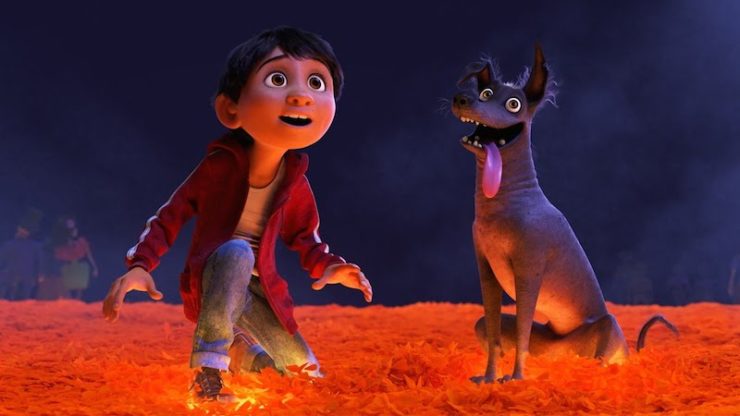
But what’s interesting to me here is that beyond this, there is no larger cosmological structure implied. No deities are invoked, and while there’s a cross on the wall in the family home, and Miguel’s Abeuelita makes the sign of the cross once, there is no other explicit Christianity. Which is obviously a great way to honor the pre-Christian roots of this celebration, while also nodding to the largely Catholic culture of modern-day Mexico. When people are forgotten they disappear from the Land of the Dead, collapsing painfully into a golden glitter that fades away into the air. No one knows what becomes of them—whether there’s some further realm of existence, or if that’s just…it. It’s a dark undercurrent for the film, that drives home both the theme that it’s important to remember those who have died, but also that eventually, someday, all of us will be gone. This touch gives the film a melancholy that adds weight to all the fun of the land of the dead.
If there was anything I didn’t like it was simply that, for the purposes of plot, there had to be class divisions and social strata even after death—despite the fact that in every Día de Muertos tradition I know, there’s an emphasis on the idea of death as the ultimate equalizer. But again, if there wasn’t that element, there would be no conflict, because Miguel would simply walk up to Ernesto de la Cruz five minutes after getting to the Land of the Dead, and the movie would end—and I’m guessing everyone wanted it to be at least a little longer than the Frozen short.
Walking home from the movie theater I crossed the street and had to step over the program from a memorial service. A woman’s photo and name were on the front cover. Someone had dropped it into the gutter, where it was soaking into a puddle. Was this an accident? A really mean posthumous commentary? Whatever it was, it’s the kind of on-the-nose detail that gets red circles and slashthroughs when you turn your story into workshop, but in life, you just have to accept it.
Leah Schnelbach really wanted to pick that memorial program up and put it somewhere nicer…but this is New York, and touching a puddle of New York sludge might hasten her own journey to the Land of the Dead. Come talk to her on Twitter!










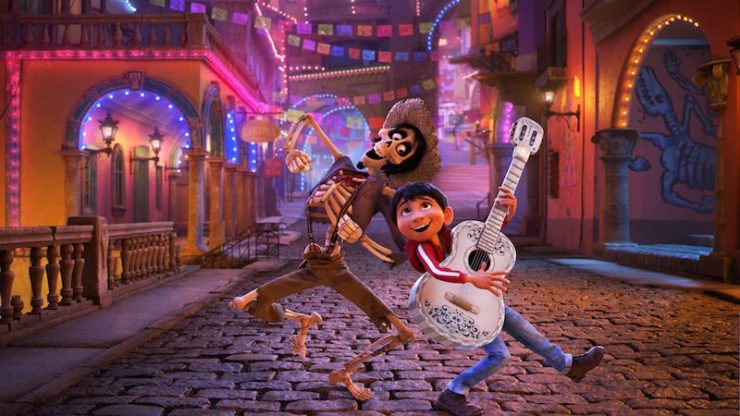
Didn’t want to read through the spoilers. How does this stand up to/compare to Book of Life? I felt it was a pretty underrated movie.
@1 Luckystrikes23 – I enjoyed Book of Life quite a lot. I like the music and the basic story. It was good though some of the emotional beats rang hollow for me, but more in the sense that they were shooting for something good and didn’t quite make it rather than doing something dumb.
Coco blows it away in that regard – super heartfelt and it never felt preachy or unearned.
I was really skeptical when Coco was first announced because so MANY of the elements on the surface seemed the same as Book of Life – Mexico, Day of the Dead, Spirit World, Music and the protagonist’s AND the protag’s family’s relation to it – I thought that it was going to be a “me too” entry. Like Antz and A Bugs Life.
That is absolutely not the case here in my opinion. I will watch both for each of their own distinct merits and I will like them both. There was never any point during it when I found myself comparing it to Book of Life, which for me is a good thing. They each felt to me like different entries in what could be the new norm for Latino and/or Mexican films.
TLDR: Both good. Coco sets a completely new standard.
I did feel that the Frozen short was twice as long as it should have been, personally. By far the worst part of the Coco experience for me – and I actually enjoyed Frozen.
Coco I agree was great. I enjoyed the way that it didn’t present the culture as “weird,” or outside, just used it as a setting and moved on while simultaneously explaining things along the way to anyone who had no idea what was going on. The animation continues to improve in leaps and bounds, and the storytelling was just plain fun.
Wonderful review Leah! Couldn’t have said it better myself. The previews were abysmal. I didn’t know there was a Frozen holiday short going in. We were at a matinee and with 30 minutes of previews and 30 minutes of Anna and Elsa, I thought our little one wouldn’t make it through Coco but she was mesmerized! As was I. And I couldn’t help leaking some tears onto my jacket sleeve remembering those we have loved and lost! Thanks for this critique. I hope you don’t mind if I share it! Xo
Oh, goodness the Frozen short was poorly executed! The big concern in the concocted story is that the whole village fears for the safety of a snowman who is missing in the forest during a winter night. Holy cow! That’s a snowman’s natural element. People should get concerned when the snowman is inside the house, not outside with all the snow.
Coco, in stark contrast, is a terrific piece of storytelling and cinematic experience. It will persist for decades as a classic film.
So many people want to compare this to The Book of Life simply because they both use Day of the Dead as a base–but how many movies and shows are based around Halloween, Christmas, the 4th of July, Valentines, and so on? It’s a holiday movie, and the two films are rather different in story and subject, even if family (living and dead) is a shared theme in both, as well as a trip through the land of the dead (and what different lands they are in these films).
I’ve seen a couple people claim the movies are similar and Coco is almost a continuation to The Book of Life, but I don’t think they actually watched either film, or payed any attention beyond the fact that they both take place in Anytown, Mexico and involve this holiday and protagonists who want to be musicians. Trickster gods interfering with a love triangle and a vengeful bandit, is rather different from the family secrets and identity driving Coco’s story forward.
While I liked The Book of Life well enough, I realized I have no overwhelming urge to rewatch it, though I likely would if I came across it/it happened to be on. It’s a good movie that I enjoyed. Coco, however, I loved, and will want to see again for sure. I felt like it tried to impart a better understanding of and appreciation for this tradition with how deeply they wove the cultural elements into the story and how it helps move the characters and story, as well as being beautiful, funny, warm, and emotional. The music isn’t just an incidental character trait for a specific scene or two, but an integral part of the plot and worked throughout the story, by multiple characters.
I highly recommend Coco to anyone who was thinking of giving it a pass or wasn’t sure. It’s one of Pixar’s best in recent years and sure to become one of their classics.
EDIT: And yes, the Frozen “short” was too long, and while it has its charming moments, the musical numbers were not needed there, and…I think it was just a mistake to release such a long unrelated “short” in front of this film
In our case, the Frozen short actually probably saved the experience for our kids, one of whom was getting close to a meltdown before the movie started, but settled at seeing the familiar characters.
As for Coco, I was absolutely blown away. It was a profoundly beautiful movie, and delved into aspects of a culture to which I am close, but of which I had little specific understanding. It’s definitely top 2 or 3 of all Pixar movies for me (and I am, by and large, a rabid fanboy for Pixar).
As has become common practice for me in Pixar movies, at least since Up, and give or take the Cars franchise, I found myself crying in this movie. A big difference here, though, was that this time, I was straight up crying, not just moist eyes. Beginning at the scene in the cenote, and the revelations of relationships, and implications of goings on in the living world (sorry, I’m trying to skate around spoiler territory here), I was a blubbering mess for the rest of the movie. I’m somewhat surprised that my son, who was sitting on my lap by that point, didn’t ask me what was wrong.